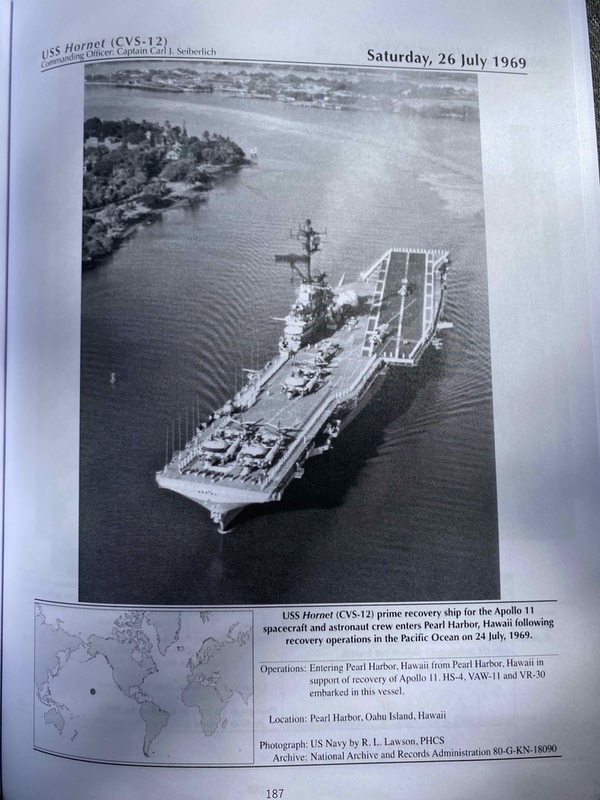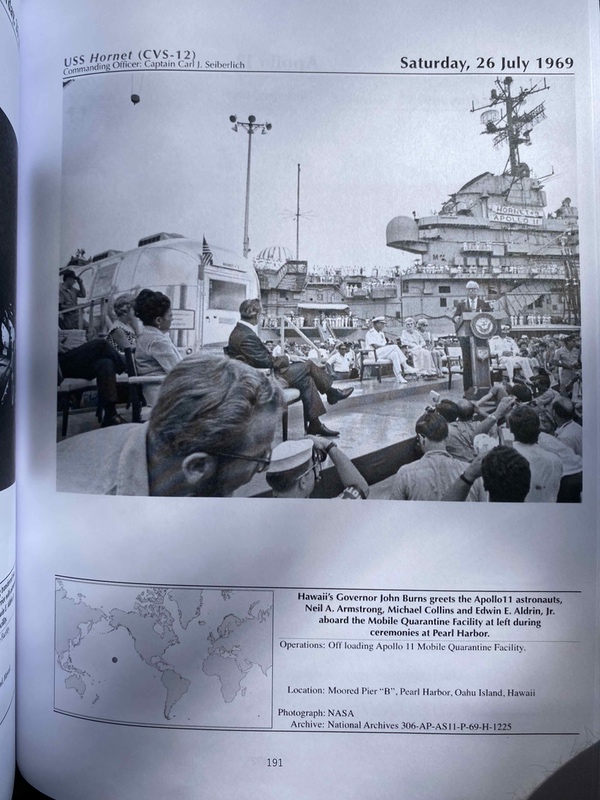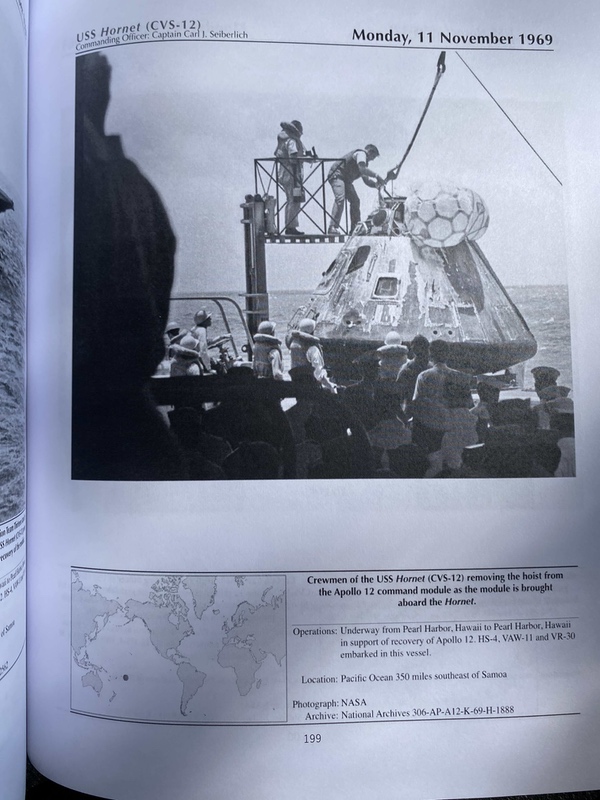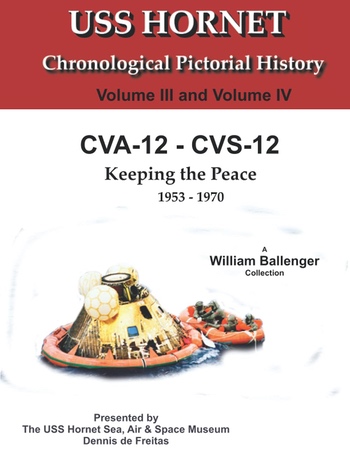Review: USS Hornet Chronological Pictorial Historyby Dwayne A. Day
|
| One surprise in the book is a collection of Apollo 11 recovery photos taken in 1969 that have not been widely published or have been otherwise forgotten. |
USS Hornet Chronological Pictorial History, published in 2021, also contains some information on this subject. The Hornet (CV-12), was built during World War II after her predecessor (CV-8), which launched the famous Doolittle Raid on Tokyo in 1942, was lost in October 1942, after barely a year in service. The second Hornet carrier finished out the war with distinction and continued to serve the Navy until 1970.
This book is the second in a series (the first is somewhat confusingly labeled Volume I and Volume II). It is a collection of black and white photographs of the USS Hornet in operation between 1953 and 1970, and a few photos after the ship’s decommissioning. The book is apparently a print-on-demand publication sponsored by the Hornet museum, and the overall quality of the photo reproductions is not high. Nevertheless, the photos are unique, and hard to find. They show the ship in various settings and configurations during this period.
 The book contains approximately one dozen photos of Hornet’s service during the Apollo 11 and 12 recoveries, many not previously published. |
The book includes photos of air operations and crew activities, including celebrations and liberty call. The photos are accompanied by a small map showing the area of the world where the ship was operating when the photo was taken, and most photos include citation information such as a National Archives accession number. Hornet was labeled an “attack carrier” for much of this time before being converted to support anti-submarine warfare (hence the change in her designation from “CVA” to “CVS”). At the beginning of the period covered in the book, Hornet quickly crossed the Atlantic into the Mediterranean and through the Suez Canal, and then spent the rest of her career operating in the Indian and Pacific Oceans. Less than a year before Hornet’s retirement, the ship was assigned as primary recovery ship for the Apollo 11 and 12 missions. The Hornet is currently moored at the old Alameda Naval Air Station.
 The book contains approximately one dozen photos of Hornet’s service during the Apollo 11 and 12 recoveries, many not previously published. |
One surprise in the book is a collection of Apollo 11 recovery photos taken in 1969 that have not been widely published or have been otherwise forgotten. Most histories of Apollo have used only a few photos from only a few missions, and often the same photos have been reproduced in many different books. That does not mean that there are no other photos from the events during those missions, only that they have not been widely distributed. The photos include the recovery of the astronauts and their spacecraft, the astronauts’ arrival on the ship (where they wore protective suits in case they were contaminated with any “Moon germs”), the temporary astronaut living quarters in a converted Airstream trailer, and the ship’s return to Pearl Harbor. A few years ago, an Apollo 11 documentary ended with restored film footage showing Hornet arriving at Pearl, and the astronaut living quarters being removed from the ship. Although that event was covered in the news at the time, most histories barely mention it, so film and photos of the event serve as a reminder that Apollo recovery was a major logistical operation.
 The book contains approximately one dozen photos of Hornet’s service during the Apollo 11 and 12 recoveries, many not previously published. |
The book also has photos of the Apollo 12 recovery later in 1969. If Apollo 12 became a footnote in history, then the recovery effort has been treated by historians as a footnote to a footnote, but the book is a reminder that there was a substantial effort to recover that crew as well. Hornet was retired in June 1970 and then spent two decades in mothballs before being cleaned up and turned into a museum ship. I have visited the ship numerous times, along with several other aircraft carrier museums. Hornet looks the worse for wear and suffers from being located in an area that is not as centrally located as some other museum ships. As this collection of photographs demonstrates, the ship had a long and illustrious history.
Note: we are now moderating comments. There will be a delay in posting comments and no guarantee that all submitted comments will be posted.
